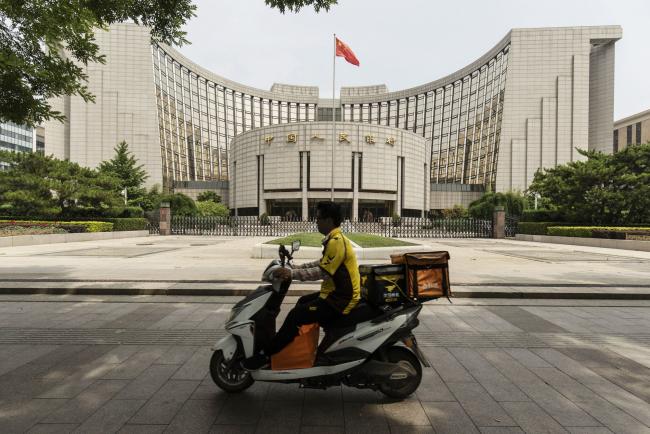(Bloomberg) -- China’s central bank ordered lenders to adopt a new loan-pricing regime for all credit from next year, marking an end to the previous benchmark and another step toward liberalizing the financial system.
Financial institutions should stop using the old lending rate as the pricing reference for all credit from January, while gradually converting existing loans to a new base -- the loan prime rate -- from March to August, the People’s Bank of China said Saturday. The one-year lending rate had provided the previous anchor for loans across the economy.
The move could lower costs for some of the 152 trillion yuan ($21.7 trillion) in yuan-denominated outstanding loans held by financial institutions and boost economic growth, even though it won’t involve a straightforward cut to interest rates. The LPR -- set at 4.15% for one-year tenor in December -- is lower than the benchmark rate at 4.35%.
Against the backdrop of the long-term slowdown in the economy, policy makers are opening the financial system to outsiders more while making it more market driven in some respects. At the same time, officials are keen to control the pace of change as they try to weed out bad debt while keeping the system stable.
The transition is “in line with the need to further reduce the financing costs for the real economy, although there’s still a long way to go,” said Fan Ruoying, an analyst at the Bank of China’s Institute of International Finance in Beijing. The move will present more challenges for commercial banks because the interest margin will be squeezed and lenders will need to improve their pricing ability, she said.
Revamped Rate
The LPR, revamped to become the benchmark for new loans this year, is based on the interest rate for one-year loans that 18 banks offer their best customers. Banks submit the quoted price each month in the form of a spread over the rate of the PBOC’s medium-term loans.
“By now close to 90% of new loans are priced with the LPR, but outstanding loans with floating rates are still based on the benchmark lending rate,” the central bank said in a separate statement. That means the real lending cost “can’t reflect changes in market interest rates,” it said.
The move may help make monetary policy more effective, resolving a long-standing problem in which cheap funding that the PBOC offers banks doesn’t result in cheaper loans to businesses. In the new scenario when all borrowing is based on the LPR, the supply of central bank funding or cuts to the rates of medium-term loans will in theory push down the LPR, and reduce the cost of all lending to businesses.
What Bloomberg’s Economists Say
“The new system promises gains in efficiency -- with market-based pricing of credit. It also gives the PBOC more independence.”
Tom Orlik and David Qu, Bloomberg Economics
For the full note click here.
Old System
Most central banks govern the price of money in an economy via the rate that banks are charged to borrow cash over short time periods. In China, that approach had been divided into two steps. First, the PBOC guided prices for funding in the inter-bank market via its reverse repurchase agreements and medium-term lending facility. Then, it set the benchmark rates that were used to price mortgages, business loans and other commercial lending -- the one-year and five-year lending rates.
While the interest rate of home mortgages should also be converted to the LPR, the new borrowing cost must be the same as the current charges to “reflect the request to regulate the property market,” the central bank said in the statement. Home mortgages could be repriced in the future, based on the LPR, it said.
The PBOC’s latest efforts show its commitment to making the interest-rate system more market-driven, though controls on deposits remain for now. The step-by-step approach appears to be trying to open up the system without shrinking interest margins too rapidly and adding more pressure to smaller lenders.
(Updates with Bloomberg Economics)
To contact Bloomberg News staff for this story: Yinan Zhao in Beijing at yzhao300@bloomberg.net
To contact the editors responsible for this story: Jeffrey Black at jblack25@bloomberg.net, Stanley James
©2019 Bloomberg L.P.
